This week’s data dump includes the first four days of early voting, letting us add a little more data.
Voter Registration Changes
County boards of elections processed the last of the regular voter registrations (deadline October 11) this week and started processing same-day registrations. There was a net increase of 7,107 Democratic, 8,741 Republican, and 16,785 unaffiliated registrations this week.
Voter registrations have increased by 203,666 since the pre-election registration surge began in late July. That is far below the 264,518 net registration increase at a similar point in 2020.

Republicans have a little over half of their 2020 registrations, while Democrats have a little under half of their 2020 registrations.
Returns Through October 20: More Republicans Voting Early
As seen at Vote Tracker, county election boards have accepted 1,031,212 ballots through October 13. The graphic below shows that county election boards misdated some returns.

35.3% of the ballots returned so far are from Democrats, compared to the Republican’s 33.2% and 31.0% from unaffiliated voters. At a similar point in 2020, it was Democrats 46.4%, Republicans 24.9% and unaffiliated 28.4%. The difference probably reflects Democrats returning to in-person voting after the COVID-19 scare caused many Democrats to vote by mail in 2020. A part of the Democratic advantage at this point in 2020 was that many of them voted by mail before early voting had started.

Democrats had a huge turnout advantage at this point in 2020. Between the decline of mail voting this year and more Republicans voting early, the turnout by registration is about where it ended in 2020. Democrats has a good couple of days after a Republican surge during the first two days of early voting.

Absentee Ballot Requests
Here is today’s snapshot of absentee ballot requests with comparisons to similar points in 2016 and 2020, provided by the North Carolina State Board of Elections:

The difference in total ballot requests between the three elections makes it difficult to compare from one election to the next, so here is a comparison by percentage:

The Republican portion increased from 25.3% of all absentee ballots last week to 25.4% this week, while the Democratic portion dipped from 35.4% to 35.0%. The unaffiliated portion increased from 38.4% to 38.7%.
Comparing North Carolina Presidential Polling to 2016 and 2020
To get some context for all the polls we see for the presidential race in North Carolina, here is a comparison of the Real Clear Politics North Carolina presidential polling averages for 15 days before election day, 2024, 2020, and 2016.

As of the time the latest polling average was available (October 18), Trump was slightly ahead of Harris. He was behind at similar points in both 2016 and 2020. He won in North Carolina 2016, 49.8-46.2% and in 2020, 49.9-48.6%.
Comparing North Carolina Gubernatorial Polling to 2020
According to the average of the last five polls at 538, Josh Stein leads Mark Robinson 49.4%-36.4% in the governor’s race. At a similar point in 2020, Roy Cooper led Dan Forest 52.2%-42.1%. Cooper won that race 51.5-47.0%

